Swiss Replicas
A Good Companion For Global Travelers, The Best Replica Watches In The World
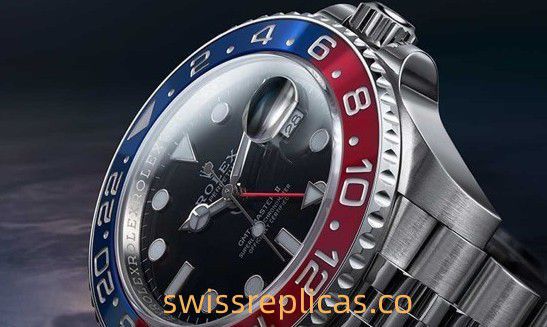
By the 1930s, genius horologist Louis Cotier created a watch-sized world time mechanism (most famously used by Patek Philippe) that could simultaneously display the accurate time in 24 different time zones.
One might have expected that Cotier or someone else would soon devise a more straightforward mechanism for those who care about the time between places. But shockingly, it was 20 years later that a watchmaking company created such a simple, accurate, and easy-to-use watch. That company was none other than Rolex, which Pan American Airways approached in preparation for the first intercontinental flight of the Boeing 707 jetliner.
The arrival of the jet age has made the world smaller. Still, it has also triggered an unexpected phenomenon – jet lag, where travel speed makes it difficult for the human body to adapt to the sudden time zone change between departure and destination.
Most people today are familiar with jet lag, but in the 1950s, people were still looking for a way to combat it—especially pilots, who were as susceptible to its effects as passengers.
Therefore, before putting the new Boeing 707 into full service, Pan Am asked Rolex to develop a watch allowing the wearer to identify the time in the “home” and “destination” time zones at a glance. Being able to see the two times at the same time will trick the brain into ignoring the time difference, which is a slightly naive idea.
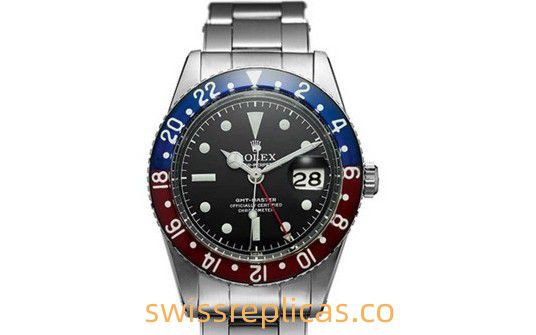
The earliest Rolex GMT-Master Reference 6542
Rolex worked with several experienced pilots to create the GMT-Master Reference 6542 in 1954, which featured a rotatable bezel first seen in the 1953 Turn-O-Graph series. (Little known is that a year before the GMT-Master was released in 1953, Glycine Airman launched a dual-time watch. The brand’s solution was not to have a GMT hand but to use a 24-hour and 24-hour dial. Rotating bezel.)
In the GMT-Master watch, the bezel is marked with a 24-hour scale and is used with the fourth hand, the 24-hour hand. The hands are decorated in red, which is bright and easy to read.
The rotating bezel is made of steel and decorated with Plexiglas inserts, one half of which is blue to represent night, and the other half is red to represent day. The 24-hour hand matches the scale on the bezel to display the destination time, and its setting is also elementary; the main hour hand is used to display the home time. Many Pan Am pilots and navigators were issued original GMT-Master watches, which were favored by more and more travelers for their functionality and aesthetics. The best replica watches in the world.
From the almost mythical “Albino” 6542 white faces to the slightly larger Reference 1675 in 1959, the famous red and blue “Pepsi ring” has been synonymous with GMT-Master for decades until the birth of GMT-Master II Reference 16760 in 1982. The GMT mechanism is easier to use in the GMT-Master II watch because the main hour hand can be adjusted in one-hour increments.
The GMT-Master II features a thicker case (hence the nickname “Fat Lady”), a sapphire crystal (replacing the previous Plexiglas), new white gold hour markers, and a unique red and black aluminum insert bezel (Known as the “Cola Circle,” naturally).
Rolex improved the movement in 1986 and significantly upgraded the case in 1990 using 904L steel. In 2005, the GMT-Master 50th anniversary version featured a gold case with a ceramic bezel and a unique Rolex green dial. Two years later, a stainless steel model with a black ceramic bezel and green GMT hands was born.
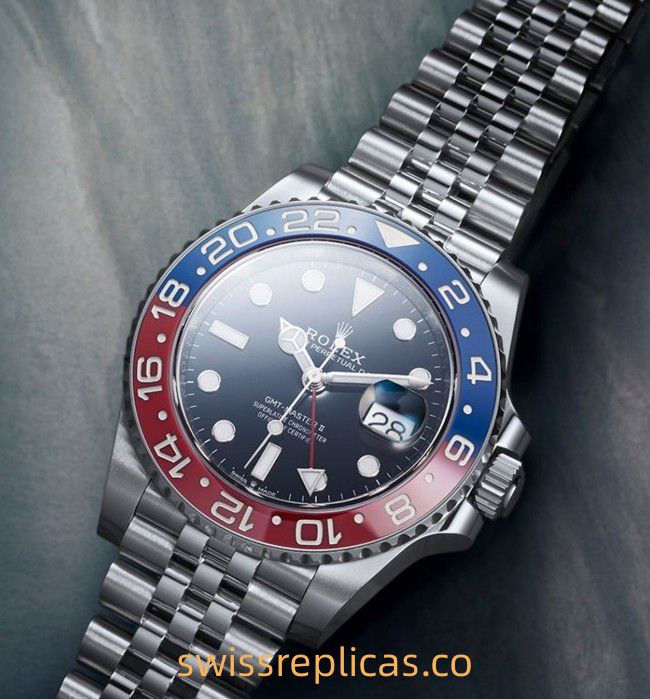
The “Cerachrom” ceramic bezel is one of the many improvements Rolex has made to its watches progressively and deliberately (the Parachrom anti-shock hairspring was also introduced in 2005). It was more apparent, crisper, and undoubtedly more robust, but it seemed to spell the end of the famous red-and-blue “Pepsi Circle” because no one had figured out how to make entirely new components in two colors.
Finally, in 2013, a technological breakthrough led to the launch of the GMT-Master II with blue and black circles. The watch soon earned the nickname “Batman.” The following year, good news came from Rolex. The brand had found a way to make a Cerachrom Pepsi bezel.
Unfortunately, the new Pepsi bezel is only available in platinum for many GMT fans. The GMT-Master has long been regarded as the model for tool fake watches, and the decision to use precious metal may seem strange to many fans. Still, some say that Sufficient two-tone bezels to satisfy the steel version need to be simplified to justify.
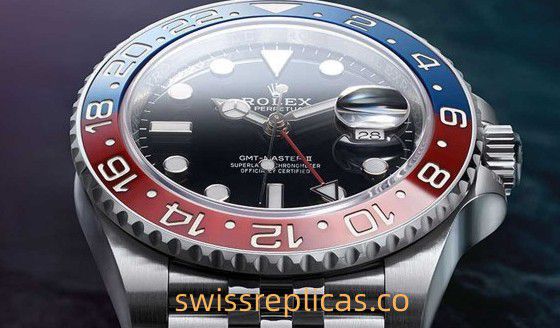
In 2018, the steel version of the GMT-Master II with Cerachrom Pepsi ring was finally launched. In addition to the new bezel, this watch is equipped with a case made of super-hard 904L Oystersteel, housing the 3285 Grandmaster Chronometer-certified movement (daily error +/-2 seconds) and a five-part bracelet. The commemorative bracelet (first seen on the Oyster Perpetual Datejust in 1945) replaces the typical three-link bracelet of GMT.
In the past, GMT-Master has occasionally used a five-link commemorative bracelet. Still, this time, it is equipped with an Oystersteel version to distinguish it from the platinum version fitted with an Oyster chain. The 904L Oystersteel version of the GMT-Master II combines the most advanced GMT mechanism, the most robust case, and the most scratch-resistant bezel – but due to the five-link commemorative bracelet, it looks like a “tool watch” Not as rich as other models.

At Baselworld, Rolex launched a new GMT-Master II watch equipped with a blue and black Cerachrom ceramic bezel and a five-link commemorative bracelet, further enriching the brand’s consistent, steady, and progressive style. Choose to delight your fans.
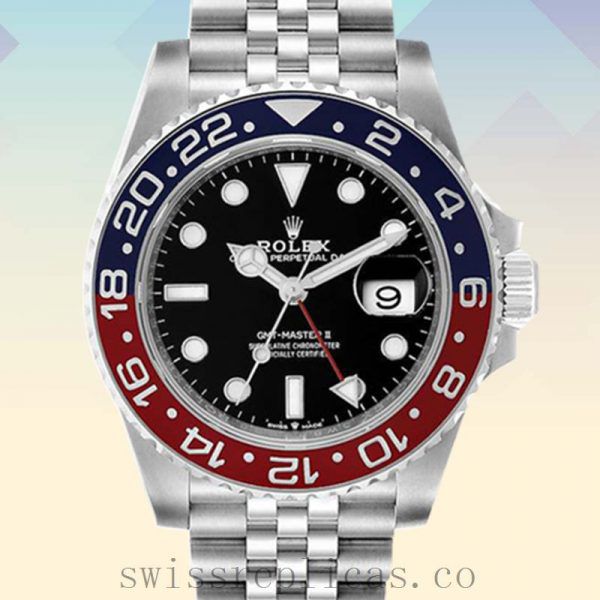
Brand: Rolex
Case Thickness: 15mm
Series: Gmt Master Ii
Band Length: 20cm
Gender: Men’s
Model: m126710blro-0002
Band Width: 20mm
Dial Color: Black Dial

